Do you get a lot done, but still feel unfulfilled at the end of the day?
The Guidelines Game helps you examine the relationship between how you spend your day and whether you have a positive state of being.
As you work towards goals, you write actions and choices that made you successful in achieving your goals. Sometimes those guidelines are related to how you do things, and sometimes they are about how you shift your state of being.
In a world where we are more often measured by what we do, we can sometimes forget to make active choices about our state of being.
Below are tips that I put together to help my clients think about their state of being, including ideas for activities they can try if they are struggling in a certain area.
I welcome you to try these tips on your journey to a healthy state of being. And if you would like a coach to help you explore these themes further, contact me!
Theme: Making Conscious Choices
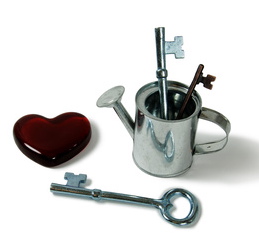 Do you struggle with making impulsive decisions that you later regret?
Do you struggle with making impulsive decisions that you later regret?
By connecting decisions with a future larger goal, you can make decisions that make you feel more alive.
Step 1: Connect Your Decision to a Future Goal – When we are able to see/feel/hear the causal connection between our action “in the moment” and what happens in the future as a result of our action now, we are more likely to act consciously. For example, “If I eat this today, I know in a week I will have a cold and be out from work, sick.” OR “If I say this, I create a groove in my mind and a belief that affects how I interact with people, and may hurt someone’s feelings.” The further away in time or chain of events the result, the harder it is to see the connection. With practice and by starting with the small and obvious, we grow our ability to know even distant connections.
Step 2: Step Away from Immediate Gratification – Once we are able to see/feel/hear the connection between our immediate action and future results, we must be able to step back from our desire for immediate gratification. “But I really, really want this pizza NOW.” How do I get up from the table, instead? OR “I’m mad and want to say this NOW.” How do I stick to right speech? OR “I really want to buy this geegaw, NOW.” How do we keep our money in our pocket? In all cases, the question is “How do I choose the path that gets me the long-term results I want?” Everyone has a different answer. Notice when you are able to step away from immediate gratification. Write down what works for you. Do it more often.
Step 3: Evaluate Your Underlying Emotions and Motivations – What if we are oblivious to what is right? Or we only think we’re right? How do we shift perspective so we DO see/hear/feel what is real? By asking ourselves questions about our underlying emotions and motivations, peeling away layers to discover new views of ourselves, and examining our views. The peeling and the examining help make our choices conscious. And there is always something new to discover, right here at home.
Suggested Action: Write down a decision you are trying to make. Write how it is connected to a future goal. Write what emotions and motivations are at play in your decision. Make a Pro and Con list for the decision. Take at least an hour before making that decision.
Listen to Audio of this Tip: 3Keys 2m36s
(Sometimes hearing the tip causes you to process it differently.)
Theme: Asking for Help
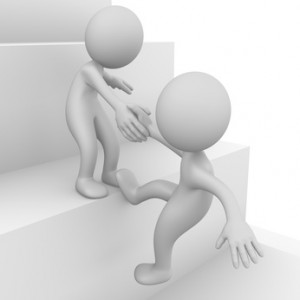 Do you struggle to ask for help from people around you?
Do you struggle to ask for help from people around you?
By valuing the wisdom and diversity of others, it can become easier to ask for help.
Are you missing out? One of my daughter’s earliest sentences was “I do myself.” Although there is much to be said for being self-sufficient, there are also times when two or more working together is a better course. Sometimes, sharing the joy of exploration benefits not just the learner but also the teacher. Sometimes, the one who has gone before can eliminate roadblocks and dead ends, while the one who is new can bring energy and new perspectives. Sometimes, two or more can accomplish what one alone cannot.
What are some signs more are better than one? When we have a vision of what is possible but only some of the skill required to make the vision real, that is a time to engage with another. When we have more fun when we are part of a team, that is a time to engage with another. When we have the skill but want new ideas or someone who can move forward even when we are not available, that is a time to engage with another.
Now that we’re connected, what do we do? We create the state of being that allows all involved to benefit most from the enterprise. We identify the outcomes we want, both individually and for us as a team. If we feel stuck, we stop and return to our desired outcomes, refocus, and select the next action step that gets us heading in the direction we want, together.
Suggested Action: Write down something that is a current struggle. List people in your life, or people in the world who you could connect with. List how they could help you with your struggle. Reach out to one of them and ask them to be a partner in the struggle.
Listen to Audio of this Tip: About Help 2m42s
(Sometimes hearing the tip causes you to process it differently.)
Theme: Connecting With Others Without Judging Them
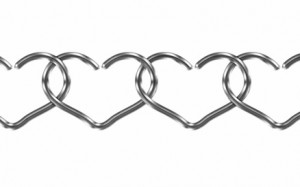 Do you find it challenging to be completely present when spending time with others?
Do you find it challenging to be completely present when spending time with others?
By imagining yourself as being a neutral party in relationships, you can be more present and connected to others.
Spaciously connect. Whatever we are doing, wherever we are, we can connect spaciously. In connecting spaciously we add the being component to the doing action of connecting. Although we can connect with someone by being interested in them, what they are doing, and who they are, or even connect in the blink of an eye as we experience commonality, when we connect spaciously, we are more. We have shifted into being: being open, beyond judgement, hearts bigger than the universe. We accept others completely for who they are in the moment while having full faith and confidence that they can be whatever they want.
What happens when we connect spaciously? In our space of complete, connected acceptance, we are nonreactive. Through our nonreactivity, we change the state of being and the doing of the people with whom we connect. Equally as important, we change ourselves. We feel what we are capable of, and have the courage to move forward despite fear.
Suggested Action: Think of a time when you felt fully present. Observe what enabled you to be present. Make a list of what worked. Some might find yoga, meditation, having free time, and being in nature beneficial. Find what works for you. Make a goal of re-creating the conditions that allowed you to be present at least once this week.
Listen to Audio of this Tip: Connect Spaciously 2m06s
(Sometimes hearing the tip causes you to process it differently.)
Theme: Experience Emotion Fully
 Do you sometimes ignore emotions in the hopes of avoiding them, but you find it impacts you later?
Do you sometimes ignore emotions in the hopes of avoiding them, but you find it impacts you later?
By allowing yourself to sit and experience emotions fully, even challenging ones, you can have a more neutral long-term experience of the emotion.
Look at the picture. What emotion do you experience as you look? Do you place a label on the emotion you feel? Happy? Sad? Do you tell a story to go with what you are seeing?
What if, instead of using words, you simply feel? Look again at the picture. Let go of the story. Let go of any words that come into the mind. Sit with the emotion. Sit with the emotion. Sit with the emotion. Notice where you feel the emotion in your body. Sit with the emotion. When ready, keep living.*
Sitting is powerful. Sometimes when we feel emotions we label as bad, difficult, or sad, we are inclined to ignore the emotion. We turn away from it mentally and sometimes physically, and focus on something we feel is positive. But when we do that, we are in fact killing ourselves, a little at a time. By choosing instead to sit with the emotion, we are living, fully. We are integrating every piece of us. We are valuing who we are. We are learning what it is our time to learn.
Life is incredible. When we sit with our emotions we become honest with ourselves, which makes us honest in the world, in our relationships with everyone around us. That clear light is brilliant, blinding, even frightening when we first experience it, perhaps saddening when we realize how much we’ve been missing. The past does not matter. There is always time for today. For change. For life.
Suggested Action: The next time you start to feel a big emotion, find a quiet place to sit and feel that emotion fully. Set a timer for a certain amount of time if that makes the action seem more realistic. When the time is up, write down observations about what happened.
Listen to Audio of this Tip: Sitting 2m56s
(Sometimes hearing the tip causes you to process it differently.)
Theme: Finding the Positive In All We Say, Hear and Do
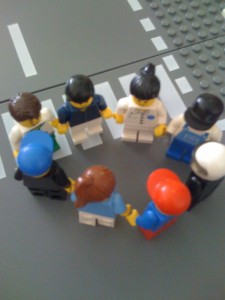 Does your tendency to find what is broken limit you in any way?
Does your tendency to find what is broken limit you in any way?
Learning how to seek the positive can open new opportunities in your thoughts, words and actions.
What is encompassment? Encompassment is the art of finding the positive in all we say, hear, and do. Through encompassment, we connect with those around us by finding commonality, relationship, and congruity. When we are encompassing, our hearts are open and we are able to love what is.
Wait, what about what isn’t acceptable? Of course, there are actions in the world that are different from what we want. We know there are people who shut out their own source and so are unable to see, understand, and feel, how their actions affect those around them. Sometimes we are those people. How do we encompass in these situations? Rather than focus on a particular act, we acknowledge the pain of the person acting. Rather than focus on anger, ours or theirs, we look to see what the anger covers. Sadness? Fear? We ask ourselves how we can be compassionate, and we act accordingly.
We remember: what goes around, comes around. Knowing we all get what we give, whether immediately or in the future, we give good and make the world the kind of world in which we want to live. We speak mindful, truthful, useful, compassionate words. We act in ways that are kind and positive. We grow and use our skill of encompassment, and in doing so make our lives easier, calmer, more even-keeled, while bringing peace to those around us.
Suggested Action: The next time you are looking, listening or doing something, take a piece of paper and draw a line down the middle of the page. Put the word “negative” in one column and “positive” in the other. Then proceed with the experience and see what thoughts come bubbling up. Write them in the appropriate column. If they are all positive, you are already practicing encompassment. If not, think of a positive angle on what is happening and write it in the positive column. Sometimes you can re-write the negative thought as it’s opposite, and it might be just as true.
Listen to Audio of this Tip: The Art of Encompassment 2m12s
(Sometimes hearing the tip causes you to process it differently.)
Theme: Managing Our Emotions
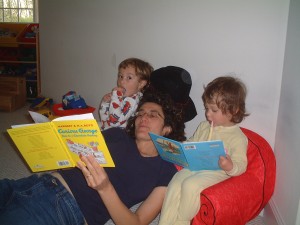 Do you ever struggle to manage your emotions so they help you achieve your goals?
Do you ever struggle to manage your emotions so they help you achieve your goals?
Knowing that we can manage our emotions, and in fact leverage them for energy, is the first step towards managing emotions.
What is motherhood? Female or male, we experience the feminine energy of motherhood when we 1) bring something new into the world and then 2) choose to nurture its development, over time. A child born or adopted, a business created, a book written, a song recorded, a play produced, a pet added to the family: these are just a few of the ways in which we can experience motherhood.
What is the core of motherhood? Love. Chaos. Joy. Endurance. Pride. In a word, emotion. Through our feminine energy we have the opportunity to experience emotions we may have never felt before, or to experience familiar emotions at a different level. We get to experience these emotions because we care deeply about our literal and figurative children.
What do we do with our emotions? Our emotions provide us with the opportunity to grow. We have experienced a huge change. Do we make the transition available to us because of this change, or do we attempt to remain the person we were? What do we learn from our emotions? Do we become more mindful, and make more conscious choices, or do we find ourselves feeling as though our emotions control us? We have a choice.
Suggested Action: Over the course of the day, keep a note of what emotions you are feeling. Beside the emotion, note how you could leverage the emotion for energy or insight so you can be more likely to achieve your goals.
Listen to Audio of this Tip: Motherhood and Managing Emotions 2:24 min
(Sometimes hearing the tip causes you to process it differently.)
Theme: Creating Good Boundaries that Protect
 Do you find yourself saying “yes” to every request, only to later feel overwhelmed and exhausted?
Do you find yourself saying “yes” to every request, only to later feel overwhelmed and exhausted?
Learn how to create good boundaries so your life feels more balanced and you are energized to do the things you most want.
Fatherhood, the male energy. What do we get? When our male energy is active, we create boundaries to which we hold steady, and protect those whom we consider within our clan.
How do we benefit from fatherhood? We benefit from fatherhood in at least three ways. First, when we are within the clan, we know we are protected. Second, as we access our male energy, decision-making is easy. We are clear about what our boundaries are; what we are willing to accept; when it is time to say, firmly, “No.” Third, those around us know exactly where we stand.
How can we use our male energy consciously? We can use our male energy consciously as we answer the question “Who do I want to be?” As we create our vision of our self, we can create the outline by starting with our boundaries. What are our absolutes? About what do we have clarity? In answering these questions, we begin to see who we are.
Suggested Action: Make a list of your current commitments. Put a green dot beside the ones that you are looking forward to, a yellow dot next to the ones that are neutral and a red dot next to the ones that you think could drain your energy. Evaluate the red dot commitments and see if you could say “no” to any of them. Pick one and make a plan to change your boundaries so this commitment goes away.
Listen to Audio of this Tip: Fatherhood 1m54s
(Sometimes hearing the tip causes you to process it differently.)
Theme: Staying Focused On Our Most Important Goals
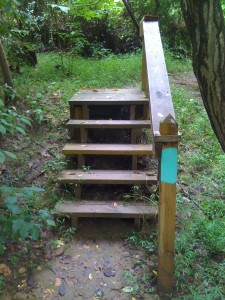 Do you have a vision for what you want to do in life, but get distracted when the path seems difficult?
Do you have a vision for what you want to do in life, but get distracted when the path seems difficult?
Learning how to recognize “signposts” on our journey can help keep our energy focused on our vision.
What good is finding our way? There are lots of lives to lead other than our own. In the short term, another’s path can seem easy, the path of least resistance. But the fruits of being off path always come back to us. Our health suffers. We feel dissatisfied. We reach the end of life and wonder what we spent our time doing and why we bothered. Although finding our own way takes energy and faith, the rewards include being able to live in the world and with ourselves with integrity, at peace.
What are our signposts? Wouldn’t it be great if, in the midst of the forest of choices with which we are surrounded, we came upon blazes to mark our path, and even better, stairs to take us easily up from one level to the next? The blazes and the stairs are present. We just need to open our eyes and look around to see them. When we are on our path, we feel satisfaction in our work. When we are on our path, we do things for their own sake, rather than as a replacement for or escape from something else. When we are on our path, we feel energized.
How can we use our signposts? By tuning in to how we feel and acknowledging the validity of our feelings, we use what we learn from our signposts to evaluate our options. If we record those times we feel satisfied, do something for its own sake, or get energized by doing something, we can then look for patterns in what we record to know what we want to do more of. In this way, we can consistently move in the direction of what works for us. We stay on our path.
Suggested Action: At the top of a piece of paper, write a statement that describes your most important goal. Below it, write a list of your current commitments. Think about each one, and how they are supporting that important goal, or not. Evaluate whether the items below should shift or whether there are gaps that would better fulfill that goal.
Listen to Audio of this Tip: Finding Our Way 2m16s
(Sometimes hearing the tip causes you to process it differently.)
Theme: Finding Your Best Path
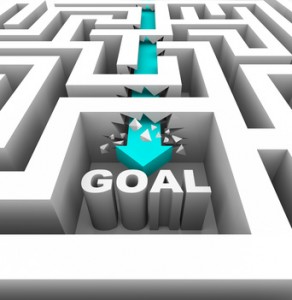 Are you worried about whether you are living your life in the most satisfying way?
Are you worried about whether you are living your life in the most satisfying way?
Listen to your body for clues about whether you are living your life in the most satisfying way.
“Pay attention. Pay attention to the reactions of your body. It is the wisdom of the Self speaking to you. Be aware of concern or anticipation, of all the feelings that come from the Self. They manifest in the body. What is their counsel?”
– Jacqueline Winspear (with thanks to Shelley Greenberg for sharing the quote)
Wait, there’s a path? Yes. There is a path. Your path. I don’t know what your path is, and no one else can tell you what your path is, either. Just knowing that there is a path is enough. Enough to begin your journey back. Enough to know that there is a better way.
How do I know if I’m on or off the path? Your body is telling you every moment whether you are on or off the path. It may be screaming, or it may be whispering. Are you listening? Look at your body. Feel your body. Are you overweight? Do you stand awkwardly? Is your body out of alignment? Do you have pain? The more we allow ourselves to move off the path, and the longer we stay off our path, the more we open ourselves to disease. Dis. Ease. This shows up in our body in ways large and small. Notice. Although it’s never too late to get on the path, we can make it easier for ourselves by acting sooner rather than later.
How do I get on the path? Getting on the path begins, for most people, with an ending. At some point, you say, “I’ve had enough. I’m not doing this anymore.” Examine how you spend your time, money, and energy nowadays. What is draining you? What is energizing you? How can you get more of what energizes you? What happens in your body when you do more of what energizes you? What happens in your body when you do less of what drains you? Being energized means you are on the path.
How do I stay on the path? Staying on the path is not so much a matter of will as it is a matter of learning the skills to take a single step in the right direction when will has disappeared. We can learn skills that help us stay on the path.
Suggested Action: Think about satisfying moments from your life. Write one down. Write down what made it satisfying and what conditions were in place to make it work. Work to make those conditions more frequent in your life.
Listen to Audio of this Tip: Get On the Path 3m14s
(Sometimes hearing the tip causes you to process it differently.)
Theme: Knowing When to Quit
 Do you feel uncertainty about when to quit doing something?
Do you feel uncertainty about when to quit doing something?
Learn how to evaluate whether you are almost there, and whether it is worth pushing through.
99% is showing up. Again. And again. And again. The other day we walked from National Harbour to the Woodrow Wilson Bridge, a round trip of about 4 miles, half uphill. My son began asking how far we were going after about a half mile. My own feet felt tired, and I wanted a nap. But I knew that I would enjoy the walk, the view, and the company, and so I chose to keep going, placing one foot in front of another, again, and again, and again. When we reached the summit, we were delighted! We had a grand view of the Potomac River, read the historical markers, enjoyed the busyness of the bridge, and spied boats on the river brought close by the free binoculars. Our ability to keep moving, despite all the naysaying inside us, led us to experience joy.
There was a moment, though…. … a moment almost to and within view of the summit, when I thought about stopping. In some way, because I could see the summit, it seemed as good as finishing. But what was in my head was not the same as reality. In my head, I did not know about the binoculars, the bald eagles’ nest, or the joy of completion. And although I could see the summit, I could see nothing of what came after. I’ve started to notice when I feel that point of wanting to stop, recognize it, and then choose to keep going to see, feel, and hear, what more there is.
But isn’t there a time to quit? Yes, there is a time to quit some things, or at least change our approach. But if we are in the habit of stopping when we are almost there – even if we don’t know we are so close – we have the opportunity to notice our desire to quit, and to keep going just a bit further to see what happens.
Suggested Action: Think about a project that you have been working on for a long time that you feel like quitting. Are you actually almost there? What systems could you put in place to support you as you keep going that last distance? Could you do something small to see if the momentum would carry you to the finish line?
Listen to Audio of this Tip: Keep Going 2m28s
(Sometimes hearing the tip causes you to process it differently.)
Theme: Being Aware of Triggers and Attachments
 Do you have things happen in your life that trigger a big emotional response and cause you to stall in your goals?
Do you have things happen in your life that trigger a big emotional response and cause you to stall in your goals?
Being aware of what triggers strong emotions in us can help us to foster detachment and keep us on track with our goals.
Close your eyes. Picture a person resting on the banks of a gently flowing river. The river flows by actively, but the person rests, peaceful, breathing easily, mindfully aware of the surroundings yet turned inward, feeling neither a desire to act nor a desire to be still, simply being.
Anytime we want, we can be the person on the banks.Rather than get caught up in the stream of our thoughts, swimming for dear life, we can consciously step onto the banks and choose to rest. We can watch the river flow by, notice our thoughts, yet recognize that our thoughts are not us. Our thoughts are just thoughts. We have the power to choose what to do with them. We can let them flow by. We can act on them. We can change them.
What is the person on the banks doing? We can also use our person as an indicator of thoughts that carry emotional weight for us. Hmm, a thought flowed by in the stream and the person is sitting upright, peering after it! What’s that about? Hmm, another thought flowed by and the person is on their feet, ready to jump in! What is that about? Bit by bit, we get to know ourselves, to understand our triggers, our attachments, our emotions, and how what we think and feel affects how we act. Little by little, we grow our ability to act in the way we want.
Suggested Action: Think about any times when an event happened and it caused you to lose focus. What was it about the event? Why did it generate that reaction? What systems could you put in place to have awareness of the trigger? Rehearse a different default response for the next time the trigger occurs.
Listen to Audio of this Tip: Audio 1m 54s
(Sometimes hearing the tip causes you to process it differently.)
Theme: Having a Clear Life Purpose
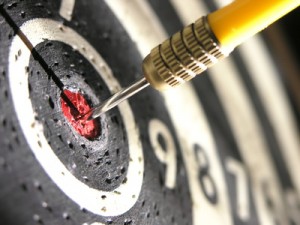 Do you wish you were more clear about your life purpose?
Do you wish you were more clear about your life purpose?
Find the patterns from past experiences where you felt a great sense of purpose, and you will likely have more clarity about your purpose.
What’s all the talk about purpose? You may have read, seen, or heard talk of purpose. Some say that our time to think and talk about our “purpose” is a luxury permitted by the fact of our basic needs being met – and in many cases exceeded. Is it? Or is it in and of itself a fundamentally human characteristic? One that people have talked about from the beginning of time?
What is so attractive about purpose? You know. You know because you have experienced those moments in life when you felt that you were exactly where you were meant to be, doing exactly what you were supposed to be doing, and feeling a tremendous sense of satisfaction and fulfillment in your doing and being. You felt the arrow hit bullseye.
We are each unique. Not terminally unique, but unique in that we have a one-of-a-kind set of skills and experiences. Why mess around? Why not use those skills for what brings satisfaction and fulfillment, for each of us? Times’ a’ ticking.
Suggested Action: Think about those times when the arrow hit home. Describe in writing your experience and what you got from your experience. Do so for 8 of such experiences. Select the words that are key for you. Post the words where you see them everyday. Identify several specific, measurable, attainable, positive, personal, present tense ways you can bring more of those characteristics into your life. Take action.
Listen to Audio of this Tip: Purpose 1m50s
(Sometimes hearing the tip causes you to process it differently.)
Theme: Knowing How You or Others Are Likely to Respond
 Are you ever surprised by how the people around you respond to situations?
Are you ever surprised by how the people around you respond to situations?
Knowing more about your Myers Briggs type, and what is happening for other types, can help you be less surprised by people’s responses.
What if you could predict what you are likely to do in a particular circumstance? What if you could predict what your co-worker, spouse, or child is likely to do in a particular circumstance? Well, with a little knowledge, you can make a pretty good guess about what that person’s preference is. Of course, since a preference is just that – like being right or left-handed – you or another can always choose to do something else. But at least you’ll know what your inclination is, be able to recognize that inclination when it arises, and consciously choose what you want to do.
The most recent Bulletin of Psychological Type, published by the Association for Psychological Type, includes several articles on how knowing one’s Myers-Briggs Type Indicator® (MBTI) personality type has been of use.
One author, Sidney Craig Courtice, talks about how type has added value to her relationship with her daughter.
Another, Andrea Boulanger Lowe, discusses her experience working with an organization that has a type vastly different from her own.
Chris Nichols discusses how, in mid-life, our non-dominant preferences can start to bloom.
Kathy Quinn discusses becoming comfortable being oneself regardless of others’ expectations, thanks to knowing type.
Kathryn Jarvis talks about how knowing type has created more acceptance in relationships.
And, in the article Self-Knowledge: The Key to the Universe, which you can read by clicking the link, I talk about how type has impacted my career choices and how I use my time and energy.
Suggestion Action: Take the Myers Briggs assessment and study what causes people from different types to respond differently.
Theme: Being Comfortable With Not Knowing the Answers
 Do you feel so uncomfortable with uncertainty that you avoid risks, even if they could lead you to great options?
Do you feel so uncomfortable with uncertainty that you avoid risks, even if they could lead you to great options?
Increasing our comfort level with uncertainty can open up many options in our lives.
Getting nothing but static, getting nothing but static.
Static filling my attic from Channel Z
I don’t know—I feel like something’s happening
Something good is happening!
~ Channel Z – The B-52s
What is the Great Unknown? That’s a trick question, right? If we knew what the Great Unknown was, it wouldn’t be unknown! True. At the same time, we do know that the Great Unknown is simply a function of time. Time reveals all. What do we do and be in the interim?
We recognize we are in the time just before the unknown becomes known. In this time, we are in a dual state of being. We feel as if our heads are filled with static. So many possibilities! No idea which way to turn! Stops and starts over and over again! We also feel that something good is happening. We are excited. We feel our energy shifting. We see openings where before we thought there were none.
What do we do with our recognition? Not much. There really isn’t much for us to do except hang on for the ride, leave ourselves open to transformation, and trust that all is exactly as it should be. Even, perhaps especially, when we don’t feel like it.
Suggested Action: List questions in your life that you would love to know now, but have no way of knowing. Sort them in order of which questions you MOST would love to know. For the most important questions, brainstorm steps you could take to test or make the unknown known. Then sit quietly. Can you find peace in not knowing for this moment? Can you feel the potential of this moment? If you feel discomfort, how could you use that discomfort as fuel in your journey to find answers?
Listen to Audio of this Tip: Accepting the Unknown 2:00 min
(Sometimes hearing the tip causes you to process it differently.)
Theme: Finding Peace by Releasing Expectations
 Do you feel stressed because you have so many expectations about how things should be?
Do you feel stressed because you have so many expectations about how things should be?
Learn how to find peace by releasing expectations.
What is the key to immediate peace? The key to immediate peace is releasing our expectations.* If we are caught up in what we expect is true about the past, what we think is true about the present, and what we want to be true in the future, our minds churn and churn, like a blender that eventually separates us into bits.
How can we return to wholeness? While all of our lives are in some aspect a result of our perceptions, we can move our perceptions closer to reality. As we do, we move closer to wholeness and to peace. In observing what happens around us, we can stop at an observation without assigning additional meaning to it. Whereas once we might have said, “Well, he said such and such, so that means blah blah blah blah blah….,” we can consciously stop at the observation that “He said such and such.” Period. End of story. No concoction. No expectations. No past, present, or future world constructed from the figments of our imagination. Rather, a simple observation; one that is not pleasant, is not painful, and is not even neutral. It just is.
How can we remember to stop concocting and start being in peace? Whenever we catch our mouths or our minds moving in circles, churning, worrying at something like a dog with an old bone, we can ask ourselves, “What expectations do I have here? How can I release those expectations?” Then, we know what to do. We can take the next step that moves us closer to releasing our expectations, and moving into peace.
Suggested Action: Write down a situation that is causing you a lot of stress right now. Write the word “Should” below it. List all the things that you believe should be happening. Write “Should Not.” Write a list of all the things that you believe should not be happening. These represent our expectations. Decide what you want to do with your list, to help you release those expectations. It might be destroying the list in a physical way. Or it might involve thinking about each item and imagining it being released like a bird from a cage.
Listen to Audio of this Tip: Immediate Peace 2m36s
(Sometimes hearing the tip causes you to process it differently.)
Theme: Evaluating How We Spend Our Time
 Do you worry whether you are spending your time in a way that gives you the most satisfaction?
Do you worry whether you are spending your time in a way that gives you the most satisfaction?
Evaluating how we spend our time can teach us to shift priorities if needed.
Time is money.
Just what does this phrase mean, anyway? I have always thought of this phrase as meaning that using time in a certain way gets me money. Lately I have come to think of it very differently. I have 2 new intepretations. First, money is time. Second, time IS money.
Money is time. To my mind, money is time means that every penny I spend is an external representation of my time. It took me some of my life time to earn that money. Now I am spending the money, which means I am spending time. Am I buying wisely? Do I care about what I am buying? Is the time I spent to earn the money to acquire the thing worth it? If not, what do I want to do differently?
Time IS money. The corollary meaning I see nowadays is that by having time to do what I want, when I want, I am rich. Flush with cash! It reminds me of the wealthy businessman who went on a vacation for the first time in years. He visited a small fishing village, where he saw a fisherman go out in the morning and come back a few hours later, with food to eat and a free afternoon ahead of him. The businessman approached the fisherman and asked him if he would be interested in going into business with him. The businessman explained that by doing so he would catch more fish, sell them to more people further away, get a bigger boat, and work more. The fisherman asked him why he would do it, and the businessman answered that in this way the fisherman would be able to take a vacation. ! The fisherman responded, “No, thanks. I enjoy my life now, working as much as I want and spending time with my friends and family.” For the fisherman, every day was a vacation.
Every second we choose how to use our time. Are we choosing consciously? Are we choosing wisely? Seconds become minutes, minutes become hours, days, weeks, years, and finally, years become our lifetime. Are we spending our lifetime on what matters most to us?
Suggested Action: This week, track how you spend your time. What goals or commitments take up most of your time? What goals or commitments are not receiving any of our time? Draw an ideal week where you spend time on the goals and commitments that you most value. How do you get from your present state to that ideal state?
Listen to Audio of this Tip: Time is Money 2m56s
(Sometimes hearing the tip causes you to process it differently.)
Theme: Feeling More Wholeness In Our Lives
 Do you feel disconnected or frustrated about how your life is proceeding?
Do you feel disconnected or frustrated about how your life is proceeding?
Focusing more on how we feel and less on doing or getting can give us more wholeness and life satisfaction.
What is wholeness? Although we describe different things we want to do or have because we believe they will make us whole, wholeness is in fact a feeling rather than a doing or getting. Since we have quite a bit of influence over how we feel, wholeness rests largely in our own hands.
How do we feel wholeness? While wholeness is a feeling, there are actions we can take to create the feeling. We can state specifically that for which we are grateful. We can be content with who we are and what we have. We can accept what is and concurrently do what we can to create what we want, while releasing attachment to outcome.
How do we make wholeness a habit? Practice. Practice. Practice some more. We get better at what we want to accomplish when we practice. If we want to learn a foreign language, we don’t expect to become fluent by learning one word a month. Rather, we immerse ourselves. By practicing, practicing, practicing gratitude, contentment, acceptance, detachment, and creating, we immerse ourselves in wholeness. Life gets better. We get better. We become fluent. We feel wholeness.
Suggested Action: For today, write one thing for which you are grateful. Note one moment where you felt contentment, acceptance or detachment. Write one item you created that gave you joy. Sit quietly and ponder whether these actions make you feel more whole.
Listen to Audio of this Tip: Audio 1m 54s
(Sometimes hearing the tip causes you to process it differently.)
